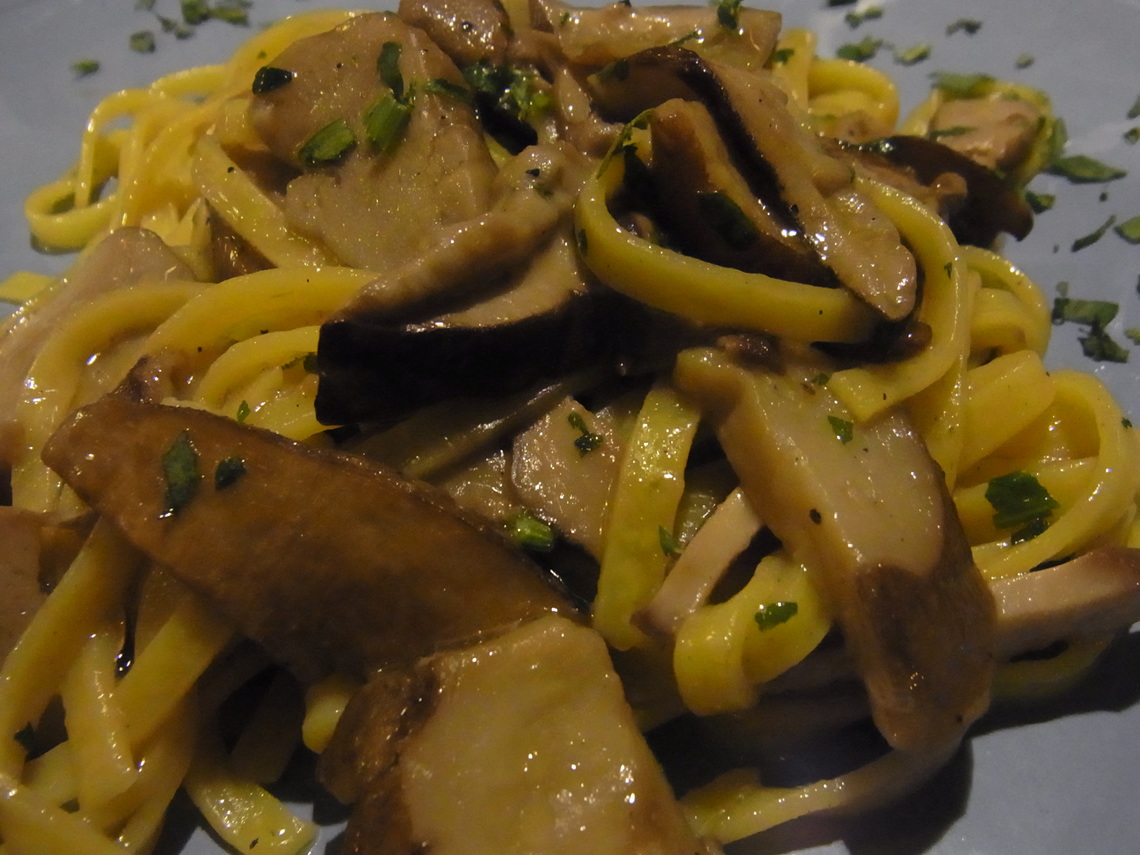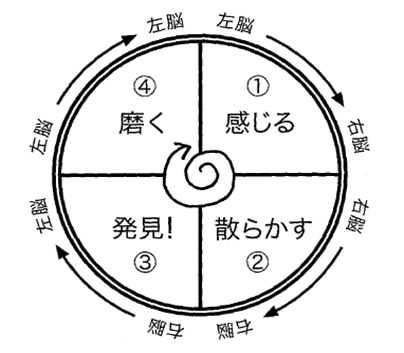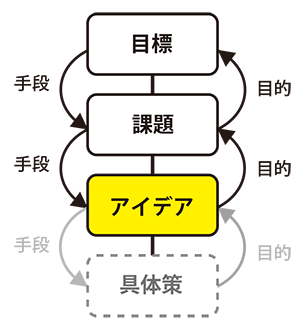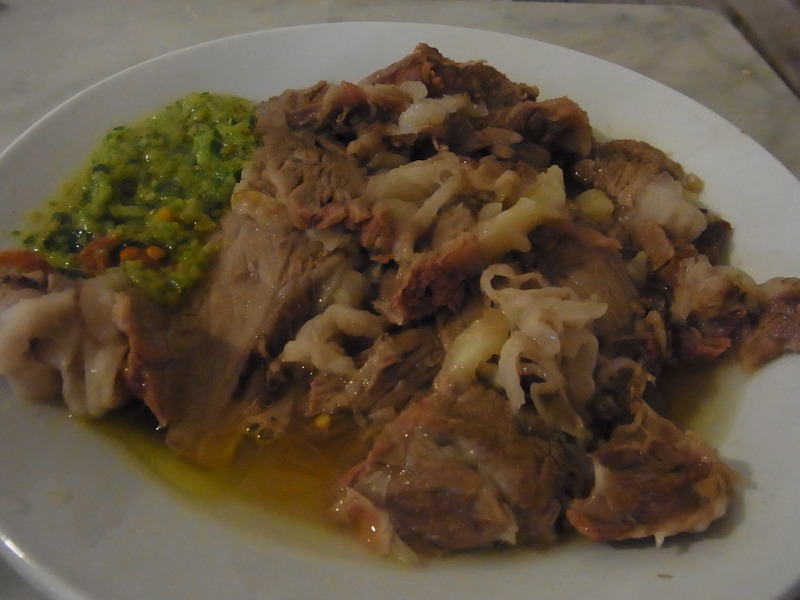
This is the real deal porcini pasta!
My 20-year service vacation took me from Rome to Tuscany. During my week-long stay, I frequented downtown taverns night after night, washing down salty dishes with cheap wine. The autumn delicacy proudly displayed at osteria entrances—porcini mushrooms—sautéed, marinated, fried, in pasta, in risotto. To prepare my stomach for more nighttime feasting, I spent my days exploring ancient Roman ruins and admiring works by Leonardo da Vinci, Michelangelo, and Raphael. Yet, back at work, all I could recall were the dishes—this plate, that plate, the food itself. The ultimate highlight? Ossobuco with porcini mushrooms (braised veal shank with bone). Ah, my "2013 Side Dish of the Year" is definitely this!
Now, after tossing and turning in search of new connections between people, things, and events, and exhausting every possible scenario, it's time for "Discovery Mode." The moment arrives when you seize the "idea" that was the goal of all that swirling thought.
The world's most famous story about this is surely "Eureka!" It's that famous story from the 3rd century BC: Archimedes, the ancient Greek physicist, was puzzling over a task from King Hiero II – "Determine if this crown is pure gold or an impure fake." Seeing water overflowing from his bath, he reportedly shouted "Eureka! (I've found it!)" and ran naked through the streets.

This thrilling moment of idea discovery is sometimes called "inspiration," but that seems to imply a bit of luck and a sensory impression. "Divine revelation" suggests an image given from outside oneself. However, in circular thinking, we consider the essence of the moment when an idea is discovered to be "organization."
In the conventional approach, the "correct direction" derived from proper investigation and analysis in the first half of the process is then jumped to with ideas in the latter half. In contrast, the first half of circular thinking (feel & scatter mode) is physical and sensory. From there, the shift to pursuing logical consistency is the "discovery! mode."

"Ideas," defined as new perspectives for solving problems toward a goal, can be organized using the three (ultimately four after passing through the "Polish Mode") frames shown on the right. The three (four) boxes are connected: the bottom box functions as the "means" for the top box, and the top box functions as the "purpose" for the bottom box. The very essence of Discovery! Mode is that this frame allows us to explain the logical consistency of what was previously intuitive and somewhat vague.
But the human brain is fascinating. The actual sensation when you find an idea is intuitive – "I see it," "It clicked." This happens because the brain unconsciously sorts through the combinations created in Scatter Mode, so the conscious, rational organization isn't immediately apparent.
According to neuroscientist Yuji Iketani, the brain "organizes information (while sleeping and dreaming). Sleep is a process of selection and discard, ensuring that properly organized information is firmly committed to memory."
Ouyang Xiu, a scholar from the Song Dynasty (China), listed three places where ideas come to mind: while riding a horse (moving), in the lavatory, and in bed (dozing under the covers). This too likely relates to the brain's function of organizing information independently of conscious effort.
Often, an "idea" you thought, "Finally, I found it!" turns out to be just a fleeting thought when revisited later. That's your brain jumping to conclusions. To truly grasp a solid idea, you must persistently and rationally verify whether your goals, challenges, and ideas are logically connected.
If you indulge yourself here and move forward with vague notions, you'll regret it later. In fact, this essay itself was written based on the hopeful observation that "maybe I can somehow connect" the "ancient Roman" ruins I visited for fun with the "ancient Greek" story of Archimedes. I ended up submitting it to the editorial department as a disjointed mess. You really need to establish a proper plan, right? Sorry, Mr. Nakajima!
Next time, I'll regroup and keep going in "Discovery Mode."
Enjoy!
Excerpted from Yuji Iketani & Shigesato Itoi, "Hippocampus," Shincho Bunko, 2005.

This is bollito (boiled beef). It really was a vacation spent just eating.






